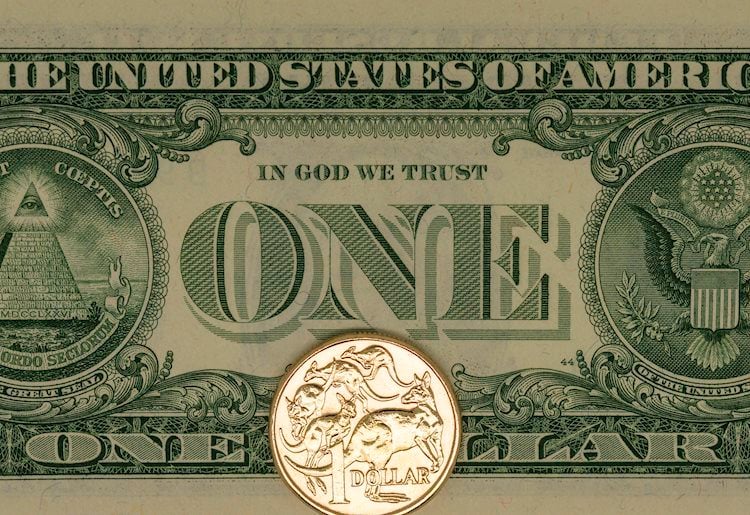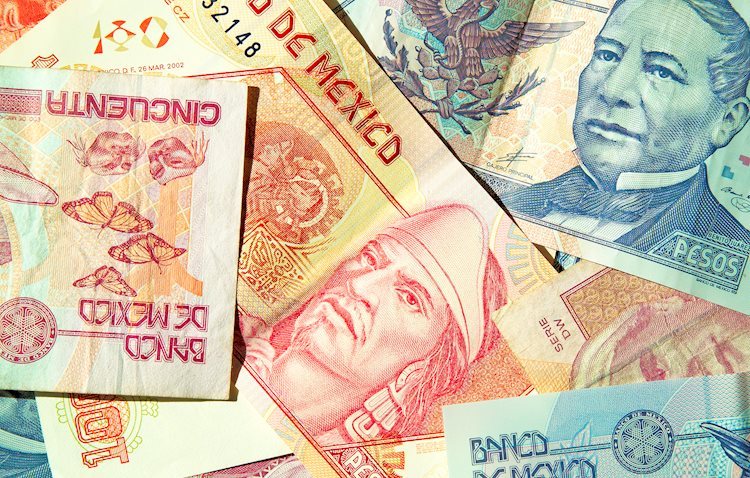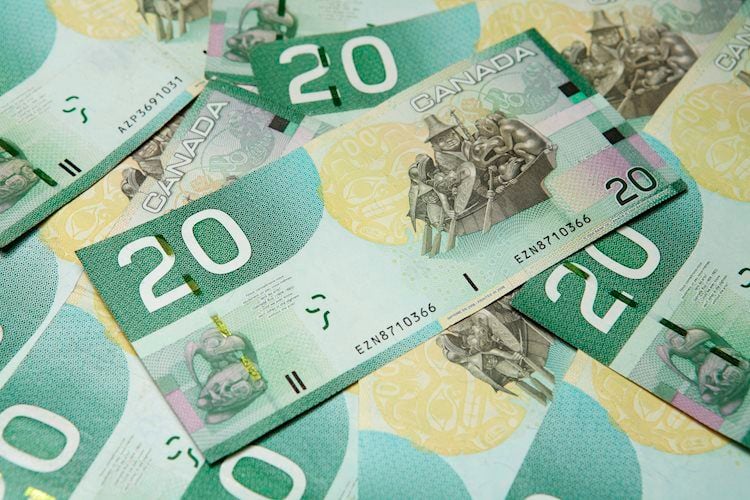Share:
Indian Rupee gains ground on the softer USD, upbeat Indian growth number.
The Reserve Bank of India (RBI) is likely to maintain the status quo on the rate in its policy meeting this week.
Market players will monitor the S&P Global India Services PMI ahead of the RBI interest rate decision.
The Indian Rupee (INR) kicks off the week in a positive mood on the weaker US Dollar (USD) on Monday. The investor inflow and the stronger Indian growth figure prompted economists to raise their growth forecasts for Asia’s third-largest economy. India’s second-quarter Gross Domestic Product (GDP) expanded 7.6% driven by robust manufacturing performance and government spending, according to the statistics ministry last week.
The Reserve Bank of India (RBI) monetary policy committee will hold its next policy meeting on December 6–8. The markets anticipate the RBI to stand pat on rates and maintain a hawkish stance amid upbeat growth and upside risks to near-term inflation on account of food prices.
Additionally, the results of the state elections are likely to be welcomed by investors and financial markets as they alleviate political uncertainty and concerns about large-scale fiscal populism ahead of the national elections.
Looking ahead, the S&P Global India Services PMI for November will be released on Tuesday. The figure is estimated to ease from 58.4 to 58.0. Investors will closely watch the RBI interest rate decision on Friday, which is expected to maintain the rate unchanged at 6.50%.
Prime Minister Narendra Modi’s Bharatiya Janata Party looks likely to form governments in three of the five Indian states that recently held elections.
Krishnamurthy V. Subramanian, Executive Director of the International Monetary Fund (IMF) forecasted a 7 % Indian growth for the ongoing financial year.
India’s NIFTY 50 reached an all-time high on Friday following the upbeat economic growth in the September quarter, which spurred confidence in the Indian economy.
India’s second-quarter Gross Domestic Product grew 7.6%, marking her the world’s fastest-growing major economy, driven by manufacturing and the government’s spending.
Indian Prime Minister Narendra Modi said the upbeat GDP growth numbers highlighted the Indian economy’s resilience and strength in the face of global challenges.
US ISM Manufacturing PMI came in weaker than expected and remained unchanged at 46.7 in November.
The Manufacturing Employment Index eased from 46.8 to 45.8 in November. Prices Paid improved from 45.1 to 49.9. Finally, the New Orders Index rose to 48.3 in November from 45.5 in the previous reading.
According to the CME FedWatch Tool, markets are now pricing in more than 50% odds of a rate cut in the first quarter of 2024.
Indian Rupee edges lower on the day. The USD/INR pair has traded within a familiar multi-month-old trading band of 82.80–83.40. According to the daily chart, the bullish bias of USD/INR stays intact despite the latest pullback as it holds above the key 100-day Exponential Moving Average (EMA) with an upward slope. However, the 14-day Relative Strength Index (RSI) dropped below the 50.0 midline, indicating that further downside cannot be ruled out.
That being said, the first upside barrier for USD/INR bulls is seen at 83.40, portraying the upper boundary of the trading range. A decisive break above 83.40 will pave the way to the year-to-date (YTD) high of 83.47, en route to a psychological round figure of 84.00. On the other hand, the key support level is located at the 83.00 psychological mark. The additional downside filter to watch is the confluence of the lower limit of the trading range and a low of September 12 at 82.80, and finally a low of August 11 at 82.60.
US Dollar price today
The table below shows the percentage change of US Dollar (USD) against listed major currencies today. US Dollar was the weakest against the Euro.
USD
EUR
GBP
CAD
AUD
JPY
NZD
CHF
USD
0.05%
0.22%
0.13%
0.11%
0.10%
0.08%
0.20%
EUR
-0.06%
0.17%
0.10%
0.07%
0.05%
0.06%
0.17%
GBP
-0.24%
-0.16%
-0.08%
-0.09%
-0.10%
-0.12%
-0.01%
CAD
-0.13%
-0.09%
0.08%
-0.02%
-0.05%
-0.04%
0.07%
AUD
-0.11%
-0.07%
0.11%
0.02%
-0.03%
-0.02%
0.09%
JPY
-0.15%
-0.05%
0.28%
0.05%
0.03%
-0.01%
0.09%
NZD
-0.08%
-0.04%
0.12%
0.05%
0.03%
0.02%
0.13%
CHF
-0.22%
-0.16%
0.01%
-0.07%
-0.10%
-0.10%
-0.13%
The heat map shows percentage changes of major currencies against each other. The base currency is picked from the left column, while the quote currency is picked from the top row. For example, if you pick the Euro from the left column and move along the horizontal line to the Japanese Yen, the percentage change displayed in the box will represent EUR (base)/JPY (quote).
Indian Rupee FAQs
What are the key factors driving the Indian Rupee?
The Indian Rupee (INR) is one of the most sensitive currencies to external factors. The price of Crude Oil (the country is highly dependent on imported Oil), the value of the US Dollar – most trade is conducted in USD – and the level of foreign investment, are all influential. Direct intervention by the Reserve Bank of India (RBI) in FX markets to keep the exchange rate stable, as well as the level of interest rates set by the RBI, are further major influencing factors on the Rupee.
How do the decisions of the Reserve Bank of India impact the Indian Rupee?
The Reserve Bank of India (RBI) actively intervenes in forex markets to maintain a stable exchange rate, to help facilitate trade. In addition, the RBI tries to maintain the inflation rate at its 4% target by adjusting interest rates. Higher interest rates usually strengthen the Rupee. This is due to the role of the ‘carry trade’ in which investors borrow in countries with lower interest rates so as to place their money in countries’ offering relatively higher interest rates and profit from the difference.
What macroeconomic factors influence the value of the Indian Rupee?
Macroeconomic factors that influence the value of the Rupee include inflation, interest rates, the economic growth rate (GDP), the balance of trade, and inflows from foreign investment. A higher growth rate can lead to more overseas investment, pushing up demand for the Rupee. A less negative balance of trade will eventually lead to a stronger Rupee. Higher interest rates, especially real rates (interest rates less inflation) are also positive for the Rupee. A risk-on environment can lead to greater inflows of Foreign Direct and Indirect Investment (FDI and FII), which also benefit the Rupee.
How does inflation impact the Indian Rupee?
Higher inflation, particularly, if it is comparatively higher than India’s peers, is generally negative for the currency as it reflects devaluation through oversupply. Inflation also increases the cost of exports, leading to more Rupees being sold to purchase foreign imports, which is Rupee-negative. At the same time, higher inflation usually leads to the Reserve Bank of India (RBI) raising interest rates and this can be positive for the Rupee, due to increased demand from international investors. The opposite effect is true of lower inflation.
Share:
Feed news
Information on these pages contains forward-looking statements that involve risks and uncertainties. Markets and instruments profiled on this page are for informational purposes only and should not in any way come across as a recommendation to buy or sell in these assets. You should do your own thorough research before making any investment decisions. FXStreet does not in any way guarantee that this information is free from mistakes, errors, or material misstatements. It also does not guarantee that this information is of a timely nature. Investing in Open Markets involves a great deal of risk, including the loss of all or a portion of your investment, as well as emotional distress. All risks, losses and costs associated with investing, including total loss of principal, are your responsibility. The views and opinions expressed in this article are those of the authors and do not necessarily reflect the official policy or position of FXStreet nor its advertisers. The author will not be held responsible for information that is found at the end of links posted on this page.
If not otherwise explicitly mentioned in the body of the article, at the time of writing, the author has no position in any stock mentioned in this article and no business relationship with any company mentioned. The author has not received compensation for writing this article, other than from FXStreet.
FXStreet and the author do not provide personalized recommendations. The author makes no representations as to the accuracy, completeness, or suitability of this information. FXStreet and the author will not be liable for any errors, omissions or any losses, injuries or damages arising from this information and its display or use. Errors and omissions excepted.
The author and FXStreet are not registered investment advisors and nothing in this article is intended to be investment advice.





